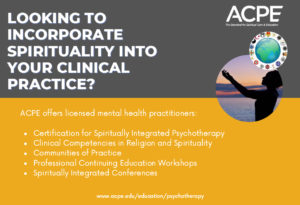What Are Sexual Cycles and Why Work With Them?
In this article, we want to help couple clinicians work with the sexual cycle as intently as with the emotional cycle, to forge the strongest bond in couples’ bodies, minds, and hearts. When we fall in love, we all ache to be loved deeply and desired passionately. Romance usually begins when we find someone attractive. When that chemistry evolves into an emotional attachment, our body’s excitement doubles back and gives us a tangible sense of “rightness” about our partner. In fact, both love and sex define romantic relationship in most of our minds.
Who needs to work with the sexual cycle?
Therapists have been taught that working with sexuality is a specialty. It’s not. It can’t be. The attachment research literature is clear that there are three behavioral systems in romantic partnerships—emotional attachment, caretaking, and sexuality (Hazan & Shaver, 1987). In emotional attachment, we seek closeness and empathy; we want our partner to want to know us, to “get” us. The caretaking cycle is about helping and commitment—being with a person you can count on, who has your back, and who comes looking for you because they know you are lost. This article focuses on the sexual cycle, which stabilizes and adds to our overall relational satisfaction, contributing “love, vitality, and excitement” (Sprecher & Cate, 2004). It’s the ordinary adventure that enlivens a committed partnership.
Sex may be difficult to talk about, but if you’re a couple’s therapist, you are by definition a sex therapist. We know sex is the most intimate of all human interactions. We are passionate about helping you know what is going on sexually, when you should bring it up, where the work should happen, why working with sex is imperative, and how to actually intervene in sexual triggers and blocks. Sexuality is important to a couple’s connection on multiple levels:
- Body: Sexual bonding increases the emotional connection on the biochemical level through the release of oxytocin, which is highest during orgasm (Uvnäs-Moberg, 1994, 1998).
- Heart: During a sexual encounter, peoples’ feelings of trust and joy are reciprocated (Sprecher & Cate, 2004) and touch regulates their bodies—emotionally and sexually they are one.
- Spirit: Partners often describe an experience of transcendence during lovemaking, as belonging to something bigger than themselves (Kleinplatz & Ménard, 2020).
- Stability: “Sex can help to promote enduring bonds between sexual partners,” say sexual attachment researchers Birnbaum and Finkel (2015).
 This power in sexuality cannot be overlooked or relegated to simply an analysis of body parts and physiology; it’s a force for attachment. The risk in believing that sexual needs are just a subcategory of emotional connection is that it neuters the opportunity to use the potency of the sexual system to create change. Sue Johnson, founder of the attachment-based therapy, Emotionally Focused Therapy, writes, “In a reciprocal feedback loop, secure attachment, with its accessibility and responsiveness, potentiates adult sexuality, and secure sexuality, in turn, promotes emotional connection and bonding” (Johnson, 2017, p. 251). Philosopher and therapist Stephen Mitchell (2009) argues:
This power in sexuality cannot be overlooked or relegated to simply an analysis of body parts and physiology; it’s a force for attachment. The risk in believing that sexual needs are just a subcategory of emotional connection is that it neuters the opportunity to use the potency of the sexual system to create change. Sue Johnson, founder of the attachment-based therapy, Emotionally Focused Therapy, writes, “In a reciprocal feedback loop, secure attachment, with its accessibility and responsiveness, potentiates adult sexuality, and secure sexuality, in turn, promotes emotional connection and bonding” (Johnson, 2017, p. 251). Philosopher and therapist Stephen Mitchell (2009) argues:
Sexuality plays a central role in relationships … the mutual exchange of intense pleasure and emotional responsiveness is perhaps the most powerful medium … for emotional connection and intimacy … It is a mistake to regard the role of sexuality in relation to needs for relatedness and attachment as a “sexualization,” which implies that sex is carrying something that can and somehow should be attended to in other ways. (p. 107)
Attachment researchers Birnbaum et al. (2006) argue that, “Although pair bonding and sexual mating systems represent distinctive behavioral systems with different primary functions… their impact on relationship well-being may reflect interdependence more than independence.” This means that emotional and sexual attachment together bond the couple in body and heart. Not only that, but these two cycles interlock to increase the partners’ love and gratitude for each other, making each feel valued (Mikulincer & Shaver, 2012). Sounds powerful? It is.
All couple therapists need to deal directly with sex. It is crucial to the strength of the couple’s bond. And like a dysfunctional emotional cycle, the costs of the negative sexual cycle are often quite severe. In fact, when the sexual connection is broken, couples might:
- Question the love both of and for their partner.
- Be tempted toward infidelity, which is shown to contribute to divorce in 59% of couples (Scott et al., 2013) or be sexually dissatisfied which is a primary reason for divorce (de Graaf & Kalmijn, 2006).
- Cease feeling bonded and find the relationship destroyed
(Hassebrauck & Fehr, 2002; Sprecher & Cate, 2004).
Why work with sexual cycles?
Because sex matters. It helps overcome both momentary and chronic emotional disruption and threat (Johnson, et al., 2018). Sex embodies the couple’s attachment needs for proximity in belly-to-belly contact and sleep-all-night-in-your-arms intimacy (Birnbaum & Reis, 2019). In partnership, a good sexual connection can strengthen a poorer emotional connection—it can help partners want to communicate with more intimate thoughts and sacrifice for the relationship (Birnbaum & Finkel, 2015). Making love adds to the sense of commitment between partners (Birnbaum and Reis, 2019). And a poor sexual attachment can interfere with emotional security (Gillath & Schachner, 2012), indicating our need to be intentional in our work early in treatment to directly influence the sexual attachment cycle through exploration. It is this very reason that couples often seek therapy (Doss et al., 2004).

Perhaps avoidance of explicitly working with the sexual cycle represents the therapeutic hope that if the emotional cycle improves, then the sexual cycle will indirectly improve. Sometimes this game plan works. But perhaps without direct inquiry, the therapist might assume things in the bedroom are good and then their good therapeutic work in the emotional cycle might be derailed. It’s easy to understand why therapists shy away from working with sex: many opportunities for couples fail to reach sexual security, our cultural reticence to talk about sex, and our fear that we won’t have enough physiological knowledge to fix what we find. None of us want to impose sex on someone who doesn’t want it. Nor do we want to accuse someone of wanting too much sex. Yet, part of this fear comes from therapists who might see libido as a fixed physiological attribute. Rather, we see desire often defined by the hyperactivating strategies and deactivating strategies of the sexual attachment cycle (Watson, 2012).
Where do we work with sexual cycles?
In session! Emotional expressions are often easier to work with for therapists because they show up so readily in session. What is less accessible in session is the visceral, nonverbal language of the sexual body that becomes powerfully eroticized at puberty and transformed in romantic relationships as longings for orgasm and sexual touch. After all, therapists are not in their clients’ bedrooms. Yet, the therapist’s hesitance to bring the sexual cycle alive in session is outweighed by its tremendous importance. Given the universality of sex, this requires comfort in discussing explicit sexual details and experiences. A therapist can increase their confidence with additional research or a little basic training regarding anatomy, physiology, and sexual functioning.

Do we need other types of touch and affection in romance besides sexual? Absolutely. But for some sexual pursuers, sex is their primary vehicle for connection and regulation. They desperately need a therapist’s help expressing the importance of their sexual needs in session. If the therapist avoids addressing the sexual cycle, they also avoid addressing how their sexually pursuing client primarily relates and thus give up the opportunity to help modify the client’s initiation to be more attuned and intimate. Oftentimes, even the sexual withdrawer will admit that their connection is better in all ways after sex; but without exploration, we can’t see what blocks them from ready response or enjoyment. Research has shown that infants die without caring touch (Szalavitz, 2010); romantic relationships die without sex.
We see desire often defined by the hyperactivating strategies and deactivating strategies of the sexual attachment cycle
Does this mean that the sexual withdrawer must have sex when they don’t want to? Absolutely not. Does this mean that the sexual withdrawer must feel sexual drive in the same way as the sexual pursuer? No. We know that many people, men as well, not just women, feel sex more in response to sexual cues and emotional intimacy (Johnson et al., 2018). But in a monogamous commitment, the sexual attachment cycle must be healthy. Secure partners have a deep appreciation of what sex means to the other and act intentionally to arouse desire in themselves and in each other.
The sexual cycle is too powerful and too advantageous to the whole therapeutic process to be left alone for clients to do as homework outside of therapy
Since these two systems are intertwined, knowing how to access and work with both the sexual cycle and the emotional cycle simultaneously is essential to effective clinical work. Clearly, this article is inviting therapists to consider working more actively with the sexual cycle in session. The sexual cycle is too powerful and too advantageous to the whole therapeutic process to be left alone for clients to do as homework outside of therapy. Learning how to facilitate a “present process,” moment-by-moment, sexual discussion of the sexual cycle in session is critical. It’s how therapists harness the power of the sexual cycle to either strengthen the couple’s bond or reveal the real-time blocks that are preventing a better connection. Therapists need to move beyond a cursory examination of sexual matters to a detailed, thorough, and balanced intentionality.
When do we work with sexual cycles?
We believe it is best if both cycles are assessed and addressed simultaneously right at the beginning of treatment. Obviously, attuned treatment demands that we trace both emotional and sexual cycles at a pace that is informed by the client’s comfort. We would no more start recommending creative date night ideas in the early stage of treatment in response to an escalated couple fighting over not connecting emotionally than we would make quick recommendations about sexual frequency or resolutions to discreet dysfunctions to a couple we are just getting to know. Yet, we need to welcome their sexual conflict to come alive in our sessions so we can see what blocks their sexual connection. Certainly, therapists need to develop an alliance to create safety before pushing for uncomfortable conversations. Sexual questions are delicate and must be handled sensitively by creating permission from the couple as you go. Even sexual problems which are not created by relational difficulties (for instance, prior trauma, injury, or physical dysfunction) will impact sexual attachment, adjustment, and satisfaction. Low sexual desire, which is reported by 50% of females seeking relational help and 25% of males, is the most reported sexual dysfunction (Péloquin et al., 2019). The prevalence of low libido might be indicative of the impact of relational functioning on sexual functioning—partners don’t want to have sex with someone with whom they don’t feel connected. But research shows that up to 80% of couples regularly experience moments where one partner wants to have sex and the other doesn’t (Day et al., 2015) and that more of both relational and sexual satisfaction is reported personally when the partners consider the needs of the sexual requester. Researchers McCarthy and Metz (2008) say that 85% of clients need some type of sexual help, and yet only 25% of therapists, regardless of their therapeutic model, discuss sex with their clients. This discrepancy between client needs and therapists’ willingness to explicitly address these needs exposes a gaping hole in the therapeutic field, and one desperately in need of filling.
Throughout the therapeutic process, therapists must keep their focus and recognize that each cycle has a gravitational pull on the other cycle. The interplay of the relational and sexual cycle has the potential to add to the couple’s momentum or block their connection; it produces peaceful rhythms or stormy seas in the tides of their love.

Laurie Watson, PhD, MA, LMFT, LCMHC, is an EFT Certified Therapist, AASECT Certified Sex Therapist, and an AAMFT Professional Member holding the Clinical Fellow designation. Watson has been a licensed couple’s counselor for over two decades and is certified in EFT and sex therapy. In clinical therapy, she has helped thousands of couples recover sexual passion and make love again in joyful, intimate, creative, and exciting ways, sometimes even after years of a sexless marriage. Due to her many years of counseling experience, Laurie remains incredibly hopeful that committed love and monogamous sex can fulfill a couple, heal deep wounds from childhood, restore each spouse to a sense of hope, and offer stability from which to face the world together. She is the author of Wanting Sex Again – How to Rediscover Desire and Heal a Sexless Marriage, a blogger for WebMD and Psychology Today with over 15 M reads, and the owner/director for Awakenings Counseling & Counseling Near Me throughout North Carolina.
George Faller, MS, LMFT, is an EFT Certified Therapist, Supervisor, and Trainer. He is an AAMFT Professional Member holding the Clinical Fellow designation and a licensed marriage and family therapist in New York and Connecticut. Faller is the founder and President of the New York Center for Emotionally Focused Therapy (EFT). As an EFT Trainer, he teaches several classes at the Ackerman Institute for the Family (the oldest family institute in the United States) in NYC, is a board member of the Porter Cason Institute for the Family at Tulane University in New Orleans, and is the director of training at the Center for Hope and Renewal in Greenwich, CT. Specializing in trauma, Family EFT, and self-of-the-therapist issues, Faller is committed to bringing EFT to underprivileged populations and pushing the leading edge of effective therapy. He is the co-author of three books: True Connection: Using the NAME IT Model to Heal Relationships (Living with Hope), Sacred Stress: A Radically Different Approach to Using Life’s Challenges for Positive Change and Emotionally Focused Family Therapy: Restoring Connection and Promoting Resilience. He has an online training series called Success In Vulnerability.
Laurie Watson and George Faller are the co-hosts of the podcast FOREPLAY – Couples and Sex Therapy with over 10 M downloads. www.foreplayrst.com
Birnbaum, G. E., & Finkel, E. J. (2015). The magnetism that holds us together: Sexuality and relationship maintenance across relationship development. Current Opinion in Psychology, 1, 29-33.
Birnbaum, G. E., & Reis, H. T. (2019). Evolved to be connected: The dynamics of attachment and sex over the course of romantic relationships. Current Opinion in Psychology, 25, 11–15. https://doi.org/10.1016/j.copsyc.2018.02.005
Birnbaum, G., Reis, H., Mikulincer, M., Gillath, O., & Orpaz, A. (2006). When sex is more than just sex: Attachment orientations, sexual experience, and relationship quality. Journal of Personality and Social Psychology, 91, 929-43. 10.1037/0022-3514.91.5.929.
Day, L., Muise, A., Joel, S., & Impett, E. (2015). To do it or not to do it? How communally motivated people navigate sexual interdependence dilemmas. Personality & Social Psychology Bulletin, 41. 10.1177/0146167215580129.
De Graaf, P. M., & Kalmijn, M. (2006). Divorce motives in a period of rising divorce: Evidence from a Dutch life-history survey. Journal of Family Issues, 27, 483-505.
Doss, B. D., Simpson, L. E., & Christensen, A. (2004). Why do couples seek marital therapy? Professional Psychology: Research and Practice, 35, 608-614.
Gillath, O., & Schachner, D. A. (2012) How sexuality and attachment interrelate, Chapter 13, by The Wiley-Blackwell handbook of couples and family relationships, First Edition. (Eds.). P. Noller & G. C. Karantzas. Blackwell Publishing Ltd.
Hassebrauck, M., & Fehr, B. (2002). Dimensions of relationship quality. Personal Relationships, 9(3), 253-270.
Hazan, C. & Shaver, P. (1987). Romantic love conceptualized as an attachment process. Journal of Personality and Social Psychology, 52, 511-524.
Johnson, S. (2017). An emotionally focused approach to sex therapy. In the Wiley handbook of sex therapy, Z. D. Peterson (Ed.). https://doi.org/10.1002/9781118510384.ch16
Johnson, S. M., Simakhodskaya, Z. & Moran, M. (2018). Addressing issues of sexuality in couples therapy: Emotionally focused therapy meets sex therapy. Current Sexual Health Reports, 10, 65-71. https://doi.org/10.1007/s11930-018-0146-5
Kleinplatz, P. J., & Ménard, A. D. (2020). Magnificent sex: Lessons from extraordinary lovers. Routledge.
McCarthy, B. W., Metz, M. E. (2008). Men’s sexual health. New York, NY: Routledge.
Mikulincer, M., & Shaver, P. R. (2012) Adult attachment and sexuality, attachment insecurities bias the functioning of the sexual behavior system, Chapter 11, The Wiley-Blackwell handbook of couples and family relationships, First Edition. (Eds.). P. Noller & G. C. Karantzas. Blackwell Publishing Ltd.
Mitchell, S. (2009). Relational concepts in psychoanalysis. Harvard University Press.
Péloquin, K., Byers, E. S., Callaci, M., & Tremblay, N. (2019). Sexual portrait of couples seeking relationship therapy. Journal of Marital and Family Therapy, 45(1), 120-133.
Scott, S. B., Rhoades, G. K., Stanley, S. M., Allen, E. S., & Markman, H. J. (2013). Reasons for divorce and recollections of premarital intervention: Implications for improving relationship education. Couple and Family Psychology: Research and Practice, 2(2), 131-145. https://doi.org/10.1037/a0032025
Sprecher, S., & Cate, R. M. (2004). Sexual satisfaction and sexual expression as predictors of relationship satisfaction and stability. In J. H. Harvey, A. Wenzel, & S. Sprecher (Eds.), The handbook of sexuality in close relationships (pp. 235-256). Lawrence Erlbaum Associates Publishers.
Szalavitz, M. (2010). Touching empathy. Psychology Today. https://www.psychologytoday.com/us/blog/born-love/201003/touching-empathy
Uvnäs-Moberg, K. (1994). Oxytocin and behaviour. Annals of Medicine, 26(5), 315-317. https://doi.org/10.3109/07853899409148343
Uvnäs-Moberg, K. (1998). Oxytocin may mediate the benefits of positive social interaction and emotions. Psychoneuroendocrinology, 23(8), 819-835. https://doi.org/10.1016/S0306-4530(98)00056-0.
Watson, L. (2012) Wanting sex again: How to restore desire and heal a sexless marriage. Berkley.
Other articles
Benefits and Risks: The TikTok Phenomenon
Marriage and family therapists (MFTs) are uniquely positioned to assess interactions between members of a system. As clinicians, we are trained to recognize the influence of parts of the client system that may never enter the therapy room and include them in our therapeutic equations.
Amanda Anderson, PhD
When the World Ceased to Exist, As We Know It: A Russian Therapist’s Experience Working with Ukrainian Refugees
The Russian Federation’s invasion of Ukraine in February 2022, and the prolonged escalation of the international armed conflict between the two nations, provoked a significant humanitarian crisis resulting in massive displacement of Ukrainian citizens.
Yulia Watters, PhD
Beginning Anew in 2023
I am filled with gratitude as I welcome 2023 as the new, incoming President of AAMFT: we have a new, incoming CEO, Christine Michaels; a new group of Board members; some ongoing challenges which we are newly poised to tackle, and opportunities that await us as we are in as strong a fiscal and strategic position than we’ve ever been.
Silvia Kaminsky, MSEd





